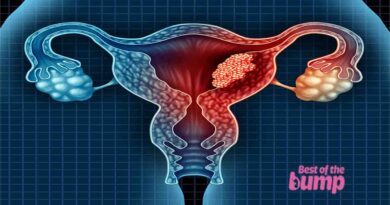Normal Delivery: A Natural and Safe Childbirth Experience
Normal delivery, also known as vaginal birth or natural childbirth, is the most common method of giving birth. It refers to the process of delivering a baby through the birth canal, without the need for surgical intervention. This natural and physiological process has been practiced for centuries and continues to be the preferred choice for many expectant mothers. In this comprehensive guide, we will explore every aspect of normal delivery, from the stages of labor to the benefits and potential challenges, providing valuable insights to expectant parents as they prepare for this life-changing event.
The Stages of Normal Delivery
Normal delivery consists of three main stages: labor, delivery, and the placental stage. Each stage plays a crucial role in the successful delivery of the baby.
Labor
Labor is a crucial stage in normal delivery, marking the onset of the birthing process. It is a natural and dynamic process that involves a series of physiological changes in the mother’s body, preparing her for the safe delivery of her baby. Understanding the stages of labor and its significance can help expectant mothers and their birth partners be better prepared for this transformative event.
Early Labor
Early labor, also known as the latent phase, is the initial stage of labor in normal delivery. During this phase, the cervix begins to efface and dilate. Contractions may start irregularly and feel like mild menstrual cramps. The mother may experience a range of emotions, from excitement to nervousness, as she prepares for the journey ahead.
Active Labor
Active labor marks the progression of normal delivery, during which the cervix continues to dilate at a more rapid pace. Contractions become stronger, longer, and more frequent, usually lasting around 60 seconds with a 3 to 5-minute interval. It is during this stage that the mother’s pain and discomfort intensify, necessitating coping strategies such as breathing techniques and position changes.
Transition Phase
The transition phase is the final and most challenging part of active labor. At this point, the cervix is nearly fully dilated, preparing for the baby’s descent through the birth canal. Contractions are intense, coming in rapid succession, and the mother may feel overwhelmed or experience doubts about her ability to cope. Continuous support from a birthing partner, doula, or midwife is essential during this phase to provide encouragement and emotional reassurance.
The Role of Supportive Care
The support and care provided to the laboring mother play a crucial role in facilitating a successful normal delivery.
Supportive Presence
Having a trusted birthing partner or a professional doula by the mother’s side can provide emotional support and advocacy, ensuring her preferences and birth plan are respected.
Comfort Measures
The birthing team can use various comfort measures such as massage, counter-pressure, and hydrotherapy to alleviate the mother’s pain and promote relaxation during labor.
Encouragement
Positive affirmations and words of encouragement can help the mother stay focused and motivated throughout the labor process.
Significance of Labor Contractions
Labor contractions are an integral part of normal delivery, serving essential functions in the birthing process.
Cervical Dilation
Contractions help the cervix dilate and efface, creating a pathway for the baby to move through the birth canal.
Baby’s Descent
The rhythmic contractions push the baby downward, guiding them toward the birth canal.
Aid in Blood Flow
Contractions facilitate blood flow to the placenta, ensuring the baby continues to receive oxygen and nutrients during labor.
Coping with Labor Pain
Labor pain is a natural and expected part of normal delivery. Various coping strategies can help the mother manage the discomfort.
Breathing Techniques
Controlled breathing can help the mother relax and manage pain during contractions.
Position Changes
Changing positions frequently can provide relief and improve the baby’s descent.
Water Therapy
Immersing in a warm bath or using a birthing pool can reduce pain and promote relaxation.
Monitoring the Baby’s Well-being
During labor, continuous monitoring of the baby’s well-being is crucial to ensure a safe delivery.
Fetal Heart Rate Monitoring
Monitoring the baby’s heart rate helps detect any signs of distress or irregularities.
Uterine Contractions Monitoring
Tracking the frequency and intensity of contractions helps assess labor progress and ensures the baby is receiving sufficient oxygen.
The Second Stage: Pushing and Delivery
The second stage of labor involves pushing efforts from the mother to propel the baby through the birth canal.
Birthing Positions
The mother can choose various positions, such as squatting, kneeling, or lying on her side, to facilitate the baby’s descent.
Support and Guidance
The birthing team offers guidance on effective pushing techniques, ensuring the mother conserves energy and avoids strain.
Welcoming the Baby
The moment of birth in normal delivery is a joyous and emotional occasion.
Skin-to-Skin Contact
Placing the baby on the mother’s chest immediately after birth promotes bonding and initiates breastfeeding.
Cutting the Umbilical Cord
The umbilical cord is clamped and cut after it stops pulsating, severing the physical connection between the baby and placenta.
Third Stage: Delivering the Placenta
After the baby’s birth, the placenta is delivered in the third stage of normal delivery.
Natural Process
The mother may be asked to push slightly to expel the placenta, which detaches from the uterine wall.
Inspection
The placenta is examined to ensure it is intact and complete, as any retained tissue can lead to complications.
Labor is a remarkable and transformative journey in the process of normal delivery. Understanding the stages of labor and its significance, along with the support and care provided during this time, can lead to a positive and empowering birthing experience. Each labor is unique, and with proper preparation and a supportive birthing team, expectant mothers can embrace the challenges of labor and welcome their bundle of joy into the world with love and confidence.
Delivery
Normal delivery, also known as vaginal birth or natural childbirth, is a remarkable journey that marks the beginning of a new life. It is a process in which a baby is born through the birth canal, without the need for surgical intervention. Throughout history, normal delivery has been celebrated as a natural and empowering way for women to bring their babies into the world. In this article, we will delve into the significance, benefits, and essential aspects of normal delivery, shedding light on this awe-inspiring process.
The Significance of Normal Delivery
Normal delivery is a physiological event that exemplifies the incredible capabilities of a woman’s body. From the onset of labor to the final moment of birth, the process unfolds in harmony with the natural rhythm of life. The labor contractions, the gradual dilation of the cervix, and the instinctive urge to push are all orchestrated by the body’s innate wisdom. This profound connection between mother and child during normal delivery fosters a unique bonding experience that is unparalleled.
The Stages of Normal Delivery
Labor
Labor marks the initiation of the normal delivery process. The uterine contractions begin, helping the cervix to efface and dilate, creating a pathway for the baby to descend into the birth canal. This stage can vary in duration, ranging from a few hours to several days, and requires patience and emotional support.
Delivery
Once the cervix is fully dilated, the delivery stage commences. With each powerful contraction, the mother actively participates by pushing, guiding her baby through the birth canal. This stage is a culmination of determination, strength, and love as the baby’s head emerges, followed by the rest of the body, into the arms of the waiting mother.
Placental Stage
Following the birth of the baby, the third stage involves the delivery of the placenta. Mild contractions continue, helping to separate the placenta from the uterine wall and expel it from the body. This final stage completes the normal delivery process and ensures the mother’s safety and well-being.
The Benefits of Normal Delivery
Physical Recovery

Normal delivery typically results in a faster physical recovery for the mother compared to cesarean section. Since it avoids major abdominal surgery, the healing process is generally quicker and less painful.
Emotional Bonding
The intimate and natural process of normal delivery fosters a strong emotional bond between the mother and her baby. The euphoria experienced after giving birth contributes to the mother’s emotional well-being and facilitates the establishment of a secure attachment with the newborn.
Transfer of Good Bacteria
As the baby passes through the birth canal during normal delivery, they are exposed to beneficial bacteria, which helps to kickstart their immune system and promotes a healthy gut.
Reduced Risk of Respiratory Issues
The squeezing motion during passage through the birth canal helps to expel fluid from the baby’s lungs, reducing the risk of respiratory issues in the early postnatal period.
Preparing for a Normal Delivery
Prenatal Education

Enroll in prenatal classes to educate yourself about the normal delivery process, breathing techniques, and pain management strategies.
Healthy Lifestyle
Maintain a healthy lifestyle during pregnancy, which includes regular exercise, a balanced diet, and staying well-hydrated.
Birth Plan
Create a birth plan with the guidance of your healthcare provider to outline your preferences and expectations for the birthing process.
Coping with Labor Pain
Breathing Techniques
Learn and practice different breathing techniques to help manage pain and stay focused during labor.
Movement and Positioning
Changing positions and moving around during labor can help ease discomfort and encourage progress.
Supportive Environment
Surround yourself with a supportive birthing team, including a partner, doula, or midwife, who can provide emotional and physical support during labor.
Normal delivery is an awe-inspiring journey that celebrates the beauty and strength of womanhood. Embracing the natural process of childbirth empowers women to trust their bodies and embrace the joy of bringing a new life into the world. With proper preparation, a supportive environment, and the guidance of healthcare professionals, normal delivery can be a transformative and unforgettable experience for expectant mothers, ensuring the safe arrival of their precious little ones.
Placental Stage
After the baby’s birth, the placenta, which provided vital nutrients to the baby during pregnancy, is expelled from the uterus. This stage is relatively short and generally requires minimal effort from the mother.
Benefits of Normal Delivery
Opting for normal delivery can offer various benefits for both the mother and the baby.
For the Mother
- Faster recovery: Compared to cesarean delivery, mothers who undergo normal delivery typically experience a quicker recovery period.
- Reduced risk of complications: Normal delivery is associated with a lower risk of infections and surgical complications.
- Emotional bonding: Many mothers report a stronger emotional bond with their baby after experiencing the natural birthing process.
- Maternal hormones: During a vaginal birth, the mother’s body releases a surge of hormones that aid in breastfeeding and postpartum recovery.
For the Baby
- Natural microbiome exposure: Passing through the birth canal exposes the baby to beneficial bacteria, which helps establish a healthy gut microbiome.
- Respiratory benefits: The squeezing motion of the birth canal helps expel fluid from the baby’s lungs, reducing the risk of respiratory issues.
- Hormonal influence: The process of normal delivery triggers the release of hormones that contribute to the baby’s alertness and adaptation to the outside world.
- Lower risk of certain health conditions: Research suggests that babies born vaginally may have a decreased risk of certain health conditions later in life.
Preparing for a Normal Delivery
Proper preparation is essential to ensure a smooth and successful normal delivery.
Prenatal classes
Prenatal classes offer invaluable preparation for expectant parents, focusing on the process of normal delivery. These classes provide essential information about the stages of labor, coping techniques for labor pain, and breathing exercises to aid in a smooth natural childbirth experience. Expectant mothers and their partners learn about different birthing positions and receive guidance on creating a birth plan that aligns with their preferences for the delivery. With the support of qualified instructors, prenatal classes equip parents with the knowledge and confidence needed to embrace the journey of normal delivery and welcome their new bundle of joy into the world.
Physical fitness
Maintaining physical fitness during pregnancy is essential for a smooth normal delivery. Regular exercise, approved by healthcare professionals, helps strengthen the muscles needed for labor and delivery, such as the pelvic floor and abdominal muscles. Engaging in prenatal exercises like walking, swimming, and yoga can also improve endurance, flexibility, and overall well-being. Physical fitness prepares expectant mothers for the physical demands of childbirth, contributing to a positive birth experience and a quicker recovery post-delivery. Always consult with a healthcare provider before starting any exercise regimen during pregnancy to ensure safety for both the mother and the baby.
Birth plan
I am committed to embracing the natural process of normal delivery for the birth of my baby. I prefer minimal medical interventions, allowing my body to progress naturally during labor. I will utilize breathing techniques and movement to cope with labor pain. My birthing environment should be calm and supportive, with my partner present to provide emotional support. I wish to explore various birthing positions to aid in the smooth progression of labor. After delivery, I would like immediate skin-to-skin contact and initiate breastfeeding. With the guidance of healthcare professionals, I trust in the beauty and strength of normal delivery for a safe and memorable birthing experience.
Coping with Labor Pain
Labor pain is a natural part of the birthing process, and there are various methods to cope with it.
Breathing techniques
During normal delivery, breathing techniques play a crucial role in managing labor pain and promoting relaxation. Deep, rhythmic breathing helps the mother stay focused and calm throughout the different stages of labor. By inhaling slowly through the nose and exhaling gently through the mouth, the mother can maintain control and conserve energy. As contractions intensify, focusing on controlled breathing allows her to work with her body, easing the baby’s passage through the birth canal. Breathing techniques not only aid in pain management but also enhance the overall birthing experience, empowering the mother during this natural and transformative journey.
Massage and counter-pressure
During normal delivery, massage and counter-pressure techniques can provide immense relief to the laboring mother. Massage involves gentle and rhythmic strokes on the back, shoulders, and legs, easing tension and promoting relaxation. Counter-pressure, on the other hand, involves applying pressure on specific points, such as the lower back or hips, to alleviate pain during contractions. These non-invasive methods are highly effective in managing labor discomfort and can be offered by a birthing partner, doula, or trained healthcare professional, creating a more comfortable and positive birthing experience.
Hydrotherapy
Hydrotherapy during normal delivery involves the use of water, typically in the form of a warm bath or shower, to provide pain relief and relaxation for the expectant mother. Immersing in water during labor can help ease muscle tension, promote a sense of calm, and reduce stress and anxiety. The buoyancy of water can also make it easier for the mother to change positions and move during contractions, which may aid in the progression of labor. Hydrotherapy is a natural and non-invasive method that complements the birthing process, offering comfort and support to women choosing a normal delivery.
The Role of the Birth Partner
The birth partner plays a crucial role in supporting the mother during labor and delivery.
Emotional support
Emotional support during normal delivery is crucial for expectant mothers. The process of childbirth can be intense and challenging, both physically and emotionally. Having a supportive birthing team, including a partner, family members, or a trained doula, can make a significant difference. Encouraging words, reassurance, and a calming presence can help the mother feel more at ease and empowered during labor. Emotional support fosters a positive birthing experience, enhances the mother’s confidence, and strengthens the emotional bond between the mother and her baby, creating a nurturing environment for the arrival of the newest family member.
Physical assistance
During a normal delivery, physical assistance is often provided by a birthing partner, midwife, or healthcare provider. This support plays a crucial role in helping the mother cope with labor pain and facilitating the birthing process. Physical assistance can include providing comfort measures, such as massage and counter-pressure on specific points, helping the mother change positions, and offering guidance on breathing techniques. The physical presence and encouragement from the support team contribute to the mother’s comfort, confidence, and overall well-being during this transformative experience of bringing new life into the world.
Advocacy
Advocacy for normal delivery aims to promote and support the natural birthing process, emphasizing its numerous benefits for both mother and baby. By raising awareness about the significance of normal delivery, encouraging evidence-based practices, and dispelling myths surrounding childbirth, advocates strive to empower expectant parents to make informed decisions. Through education, promoting access to quality prenatal care, and ensuring that birthing options are respected and available, advocacy for normal delivery seeks to create a positive and empowering birthing experience for women, fostering a deeper connection between mother and child while prioritizing the well-being and health of both.
Potential Challenges and Complications
While normal delivery is generally safe, certain challenges and complications may arise.
Prolonged labor
Prolonged labor, also known as prolonged or prolonged second stage of labor, can occur during a normal delivery. It refers to a prolonged period of time during the second stage of labor when the cervix is fully dilated, but the baby’s descent through the birth canal is slow. Prolonged labor can be physically and emotionally challenging for the mother, and it may necessitate additional medical interventions to ensure the well-being of both the mother and the baby. Close monitoring by healthcare professionals is essential during prolonged labor to address any potential complications and facilitate a safe delivery.
Fetal distress
Fetal distress is a critical concern that can arise during normal delivery. It occurs when the baby’s oxygen supply is compromised, leading to changes in the baby’s heart rate or other signs of distress. This condition can be caused by various factors, such as umbilical cord compression, placental issues, or prolonged labor. Prompt detection and appropriate medical intervention are crucial to ensure the baby’s well-being and prevent complications. Healthcare providers closely monitor the baby’s heart rate during labor to identify any signs of fetal distress and take timely actions to safeguard the baby’s health throughout the normal delivery process.
Episiotomy
During a normal delivery, an episiotomy is a surgical incision made in the perineum, the area between the vagina and the anus, to widen the birth canal. This procedure is performed when the healthcare provider believes that a controlled incision may prevent tearing and facilitate the baby’s birth. While episiotomies were once routine, they are now less common due to advancements in perineal care and a focus on promoting natural healing. The decision to perform an episiotomy is carefully considered by the healthcare team and is only done when deemed necessary for the well-being of the mother and the baby.
Postpartum Care and Recovery
After normal delivery, the mother requires adequate postpartum care and support for a smooth recovery.
Rest and nutrition
Rest and nutrition are crucial aspects to consider during and after normal delivery. Adequate rest during labor allows the mother to conserve energy and maintain her strength throughout the birthing process. Following delivery, rest promotes faster physical recovery and helps the body heal. Proper nutrition is equally vital, providing essential nutrients for postpartum healing and breastfeeding. A balanced diet supports the mother’s overall well-being and enhances her ability to care for the newborn. By prioritizing rest and nourishment, mothers can optimize their recovery and ensure a healthy start for both themselves and their babies after a normal delivery.
Perineal care

Perineal care is essential for women who have undergone a normal delivery. The perineum, the area between the vagina and anus, may experience stretching or tearing during childbirth. Proper perineal care involves keeping the area clean and dry, especially after using the bathroom, to prevent infection and promote healing. Gentle cleaning with warm water, patting the area dry with a soft cloth, and using peri bottles for rinsing are common practices. Additionally, using cold packs or warm compresses can help alleviate discomfort and reduce swelling in the perineal area. Regular perineal care aids in the postpartum recovery process and ensures the mother’s well-being.
Breastfeeding support
After a normal delivery, breastfeeding support is essential for the mother and baby’s well-being. Breastfeeding offers numerous benefits, including optimal nutrition for the baby, strengthened immune system, and enhanced bonding between mother and child. Lactation consultants and healthcare providers play a crucial role in guiding mothers on proper breastfeeding techniques, ensuring a successful and rewarding breastfeeding journey. They offer assistance in latching techniques, addressing common breastfeeding challenges, and providing emotional support. Breastfeeding support after a normal delivery helps mothers gain confidence in nurturing their babies and fosters a healthy and loving start to their new chapter together.
Normal delivery is a natural and empowering way to bring a new life into the world. Understanding the stages, benefits, and challenges associated with this birthing method can help expectant parents prepare mentally and physically for this life-changing event. Remember that every birth experience is unique, and the support of qualified healthcare professionals, birthing partners, and a positive mindset can make all the difference in ensuring a safe and joyful childbirth.
See This Also




